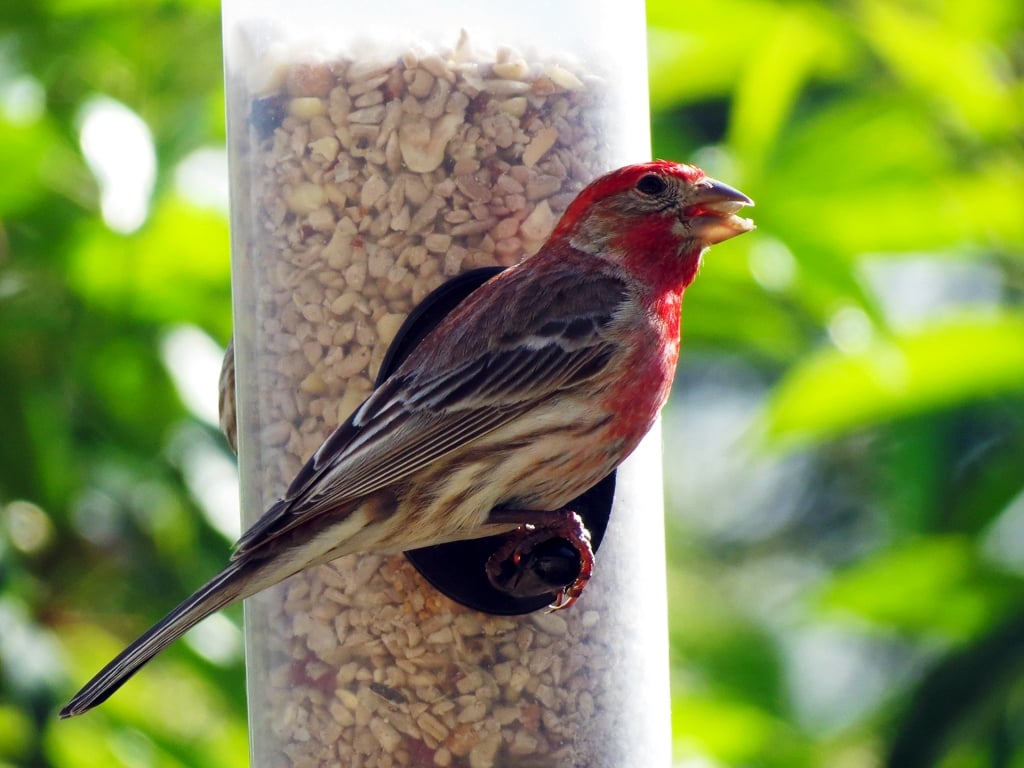
In the colder months, birds bring color and motion to gardens at rest, whether you watch them from a kitchen window or enjoy their antics through the glass of a cozy greenhouse. When I have questions about feeding my winged denizens, I turn to Dan Gleason, owner of Wild Birds Unlimited in Eugene. Dan taught Field Ornithology for over 30 years at the University of Oregon and is the author of Birds! From the Inside Out.
Here’s a quick quiz based on Dan’s expertise.
If you had to offer just one kind of food, what would that be?
- Mixed seeds
- Black oil sunflower seeds
- Niger seeds
- Suet
B. Whole or hulled, black oil sunflower seeds are the most popular with widest variety of birds. Fresh seed shells should look dark and shiny, not gray and dusty. All the other answers are also enjoyed, so why not set out a smorgasbord?
True or false: Peanut butter can choke birds.
True. Dan says some studies (not all) indicate this could be a problem. So to be safe, either buy mixes like Jim’s Birdacious Bark Butter or make your own. Combining two parts pure peanut butter (no additives) with one part cornmeal makes it less sticky.
True or false: Taking down seed trays and hummingbird feeders in fall encourages birds to migrate.
False, says Dan. Migrations begin with daylight and weather pattern shifts, and bird’s hormonal changes. Seeds and sugar water will nourish the fliers for their journey. In areas of the U.S.—like the Pacific Northwest—hummingbirds now overwinter. Do not be tempted to boost the sugar above the standard 4-to-1 water/sugar ratio to keep the mixture from freezing. Dan says this will dehydrate the birds. Hang a light or other heat source nearby instead.
True or false: Many seed-eating birds feed their babies insects.
True. If you attract seed eaters like chickadees and sparrows, you get the added bonus of insect control in your garden when they are raising their young.
Which is the greatest threat to birds?
- Destruction of habitat
- Hawks
- Domestic cats
- Raccoons
C. is the dismal answer. Over two billion birds a year go down to cats, mostly unowned. So give careful attention to backyard feeder locations. Prune up shrubs, and allow space between plantings near feeders so cats can’t hide. My favorite strategy—and Dan approves—I discourage kitty lurkers by hanging a feeder above a fiercely thorny shrub.










